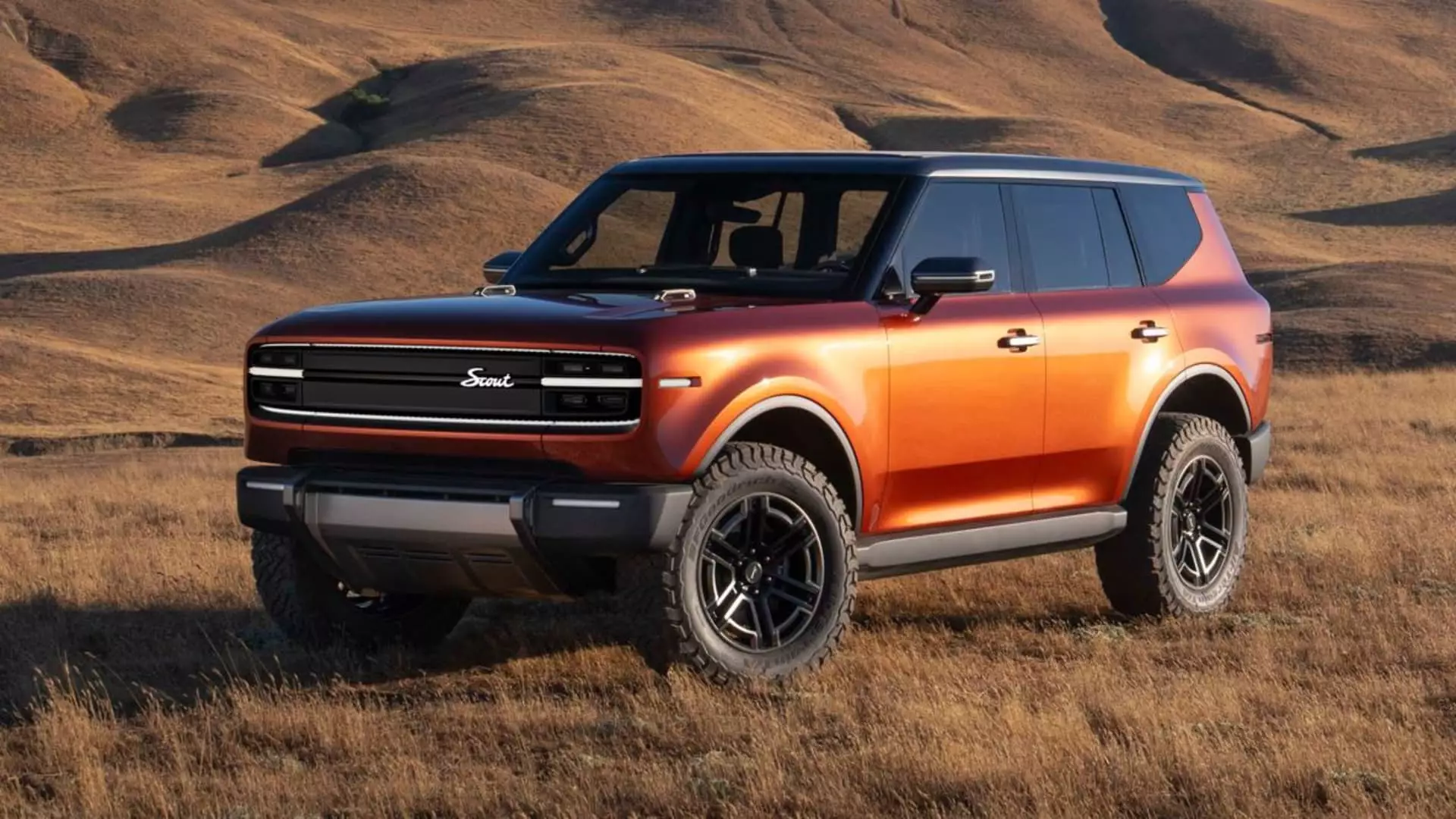The automotive industry is witnessing a remarkable evolution as manufacturers pivot to electrification in response to changing consumer preferences and market demands. One notable player in this burgeoning arena is Scout Motors, a revitalized brand that carries the legacy of an American vehicle nameplate first introduced in the 1960s. Recently, during a presentation in Nashville, Tennessee, Scout Motors unveiled its plans for entering the electric vehicle (EV) market, marking a significant turning point not only for the company but also for its parent organization, Volkswagen.
Traditionally expected to launch a lineup comprised solely of all-electric vehicles, Scout’s leadership, led by CEO Scott Keogh, has recognized that consumer adoption rates of EVs are not as robust as anticipated. This has prompted the company to diversify its offerings to include Extended-Range Electric Vehicles (EREVs), essentially bridging the gap between traditional internal combustion engines and fully electric models. The strategic inclusion of EREVs underscores Scout’s adaptive approach in a rapidly volatile market, signaling a departure from rigid product development toward a more fluid business model capable of responding to external pressures and consumer sentiment.
At first glance, EREVs appear to present a compromise: they combine the benefits of electric driving with the reassurance of a gasoline engine. Scout’s EREVs will maintain essential electric vehicle features—specifically electric motors and battery systems—while incorporating a traditional internal combustion engine that serves as a generator when battery charge diminishes. This design philosophy allows the vehicle to function as a fully electric car during most of its operation, providing a backup mechanism without sacrificing performance.
Keogh articulated that by introducing EREVs, Scout aims not only to appeal to current EV consumers but also to attract hesitant buyers. This strategy presents an opportunity for those who may still be skeptical about fully electric solutions, offering a safety net as they transition into the electrified domain. By connecting potential customers with the electrification experience while providing a ‘backup plan,’ Scout’s operational model seeks to navigate the inherent uncertainties of the automotive landscape, particularly concerning fluctuating consumer demand and evolving environmental policies.
Market Positioning and Financial Aspirations
The company is ambitiously eyeing a substantial portion of the North American automotive market, targeting high-demand segments such as full-size pickup trucks and SUVs. Through its forthcoming models—the Traveler SUV and Terra pickup truck—Scout aims to capture approximately 40% of the lucrative market for larger vehicles, which are often tied to the most significant profit margins. Keogh’s assertion that Scout aspires to achieve operational profitability within a year of launching initial production is an ambitious goal, particularly in a climate where many EV startups, like Rivian and Lucid, struggle with substantial financial losses per unit.
The establishment of a $2 billion manufacturing facility in South Carolina is poised to play a crucial role in this financial strategy. The factory’s production capacity is projected at 200,000 vehicles annually, paired with a planned use of battery systems from Volkswagen’s joint venture in Canada, mitigating one of the largest cost barriers in electric vehicle production. However, the question of whether Scout’s operational strategies will yield the desired financial outcomes remains to be seen, especially when considering industry valuation realities and consumer trends in EV adoption.
Design Philosophy and Technical Innovations
In terms of design, Scout’s upcoming vehicles meld historical influences with modern sensibilities, resulting in an aesthetic that reflects a blend of nostalgia and contemporary appeal. The Traveler and Terra models, which integrate enhanced features such as extensive horizontal screens and premium materials, are tailored to resonate with today’s consumers. This design narrative not only enhances user experience but also aligns with Scout’s potential market positioning against established competitors like Jeep and Ford.
From a technical standpoint, Scout has made noteworthy promises about performance, suggesting that their electric models will excel in both power and range. With capabilities of scaling steep inclines and achieving rapid acceleration, their vehicles are designed to appeal not only to the eco-conscious buyer but also to those with a penchant for adventure. The promise of over 500 miles of range for the EREVs are particularly enticing in a marketplace that often defines its electric offerings by concern over battery longevity.
Despite these strategic endeavors, Scout is entering an electric truck segment characterized by formidable competition and fluctuating consumer interest. With major manufacturers such as Ford and GM rushing to launch electric variants, the market dynamics are unpredictable. Sales have shown some volatility, signifying the necessity for organizations like Scout to remain agile in their operations and responsive to market signals.
Scout Motors’ strategic expansion into the world of electrification, characterized by the debut of EREVs alongside traditional electric models, illustrates a keen understanding of current market conditions and consumer behavior. The company’s potential success may hinge on its ability to navigate this evolving landscape while coaxing buyers who remain rooted in traditional driving experiences. As the automotive sector continues to grapple with the transition toward sustainable transportation, Scout Motors stands at a pivotal intersection ripe with opportunity and challenge alike.

